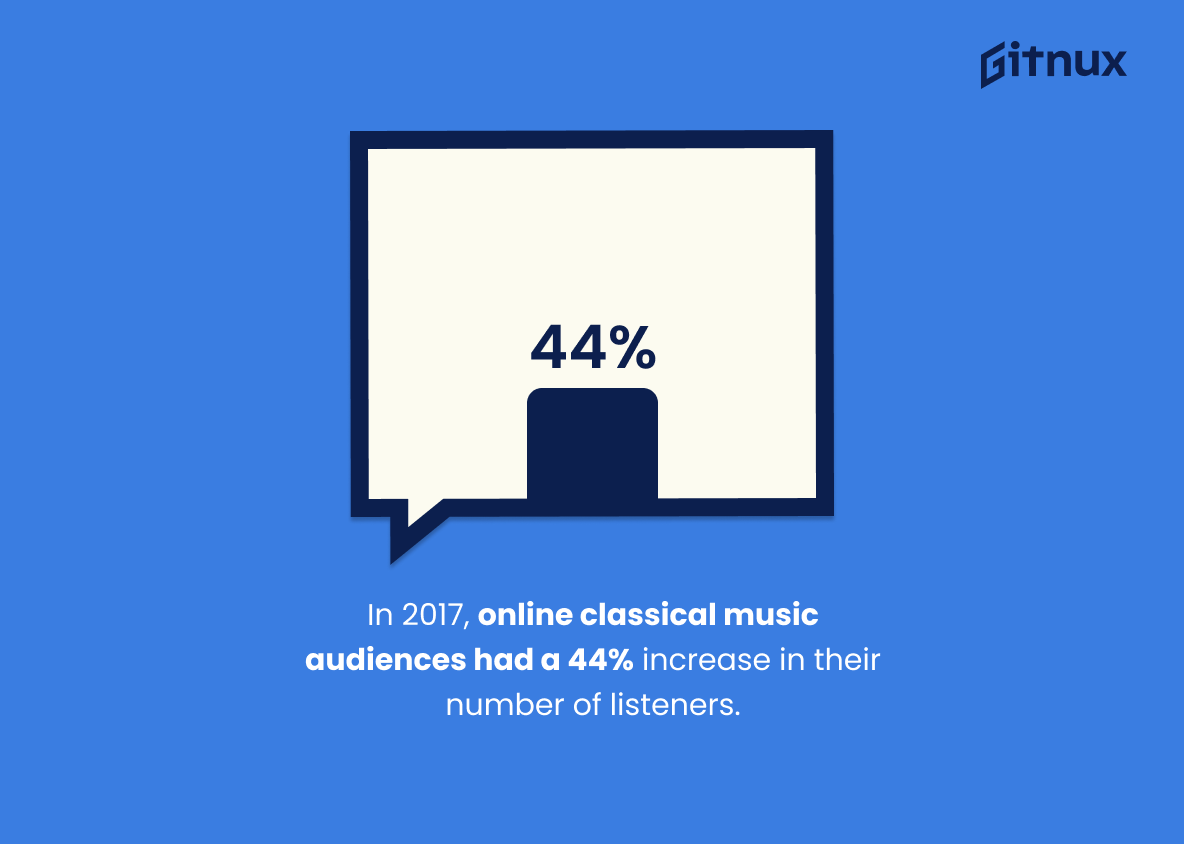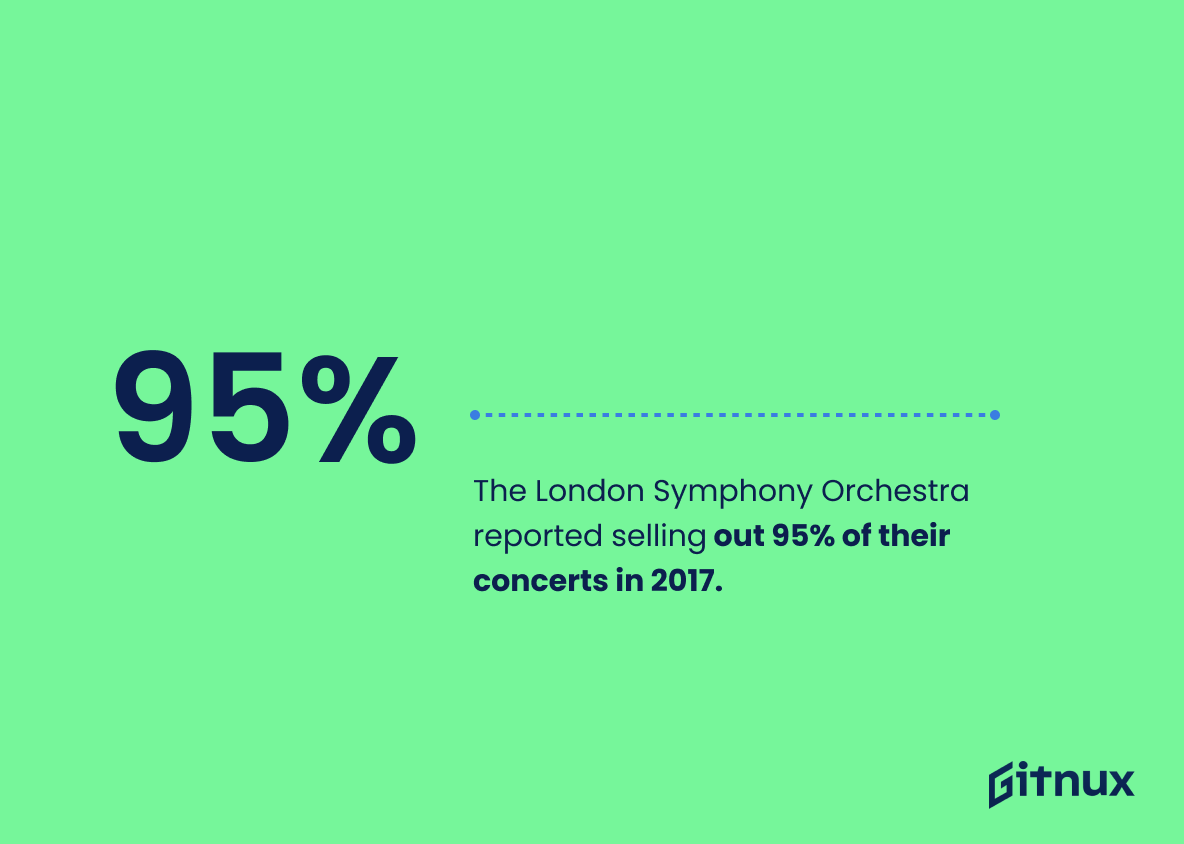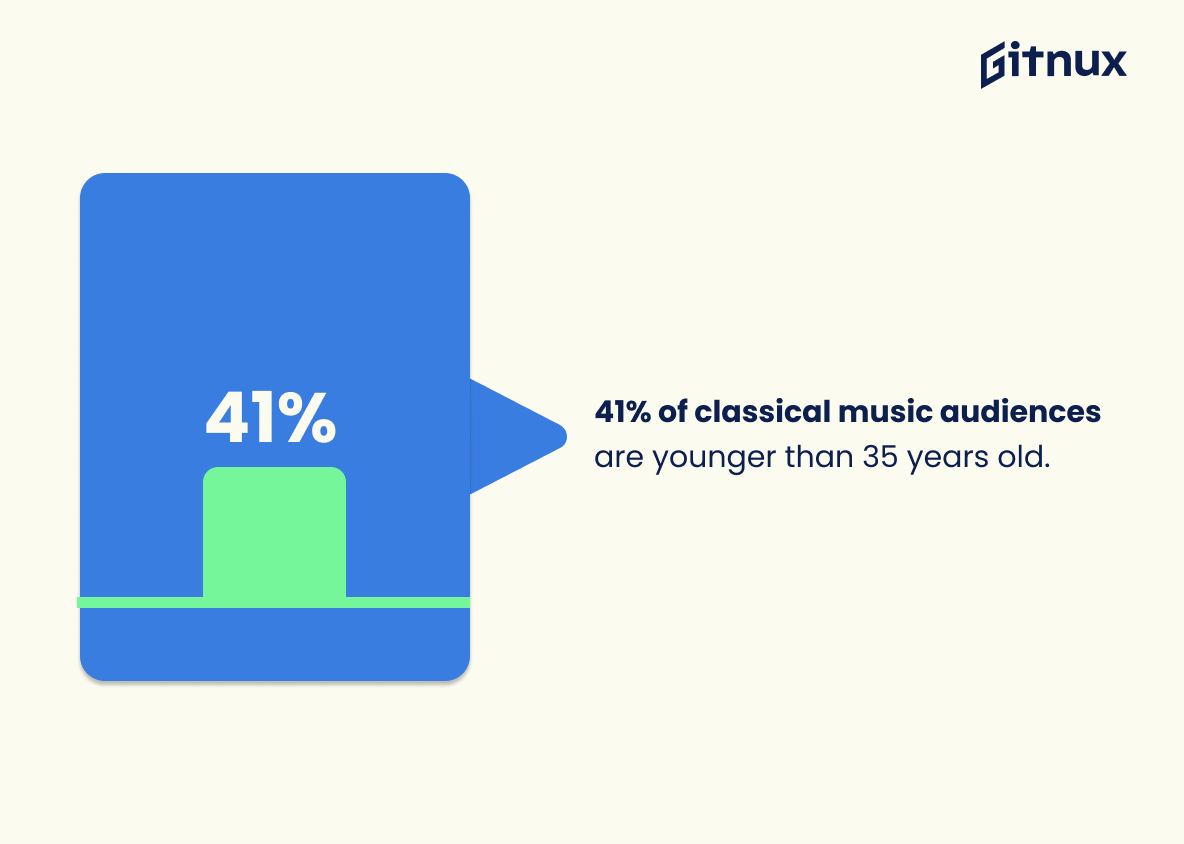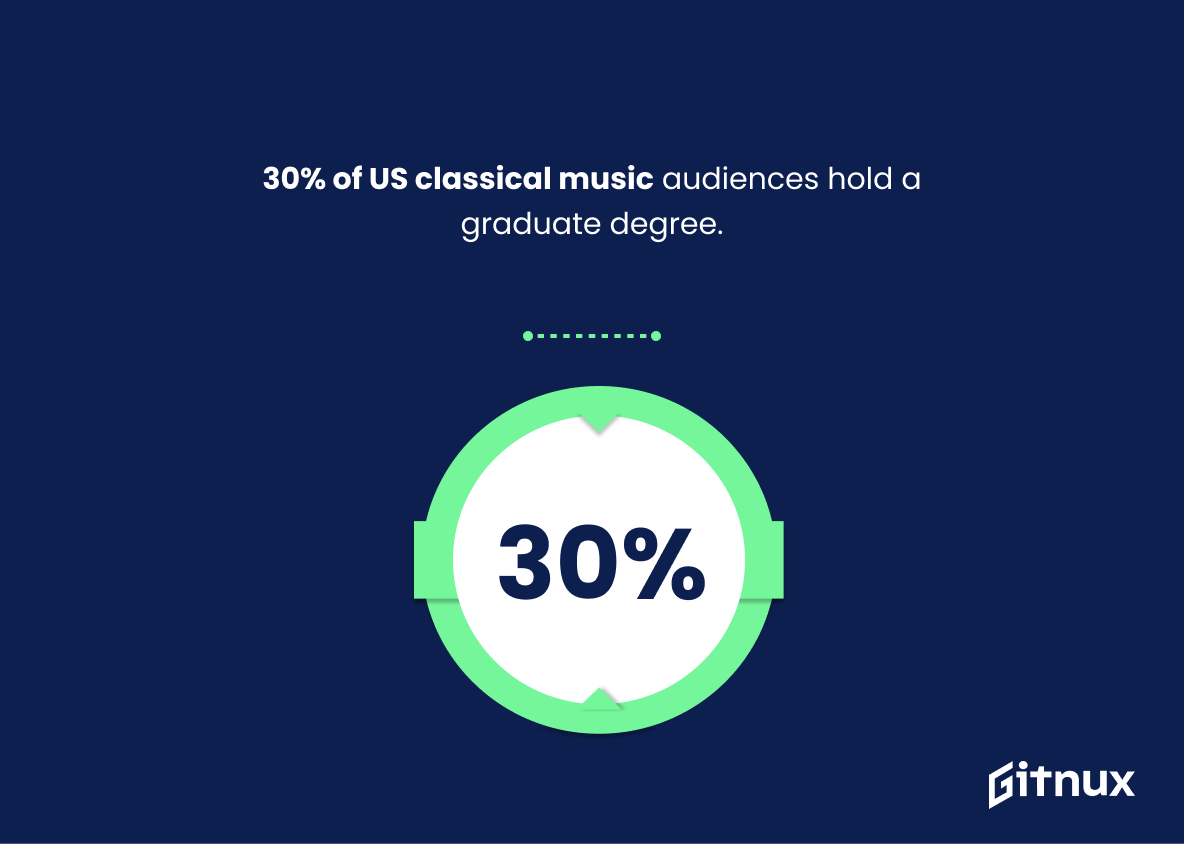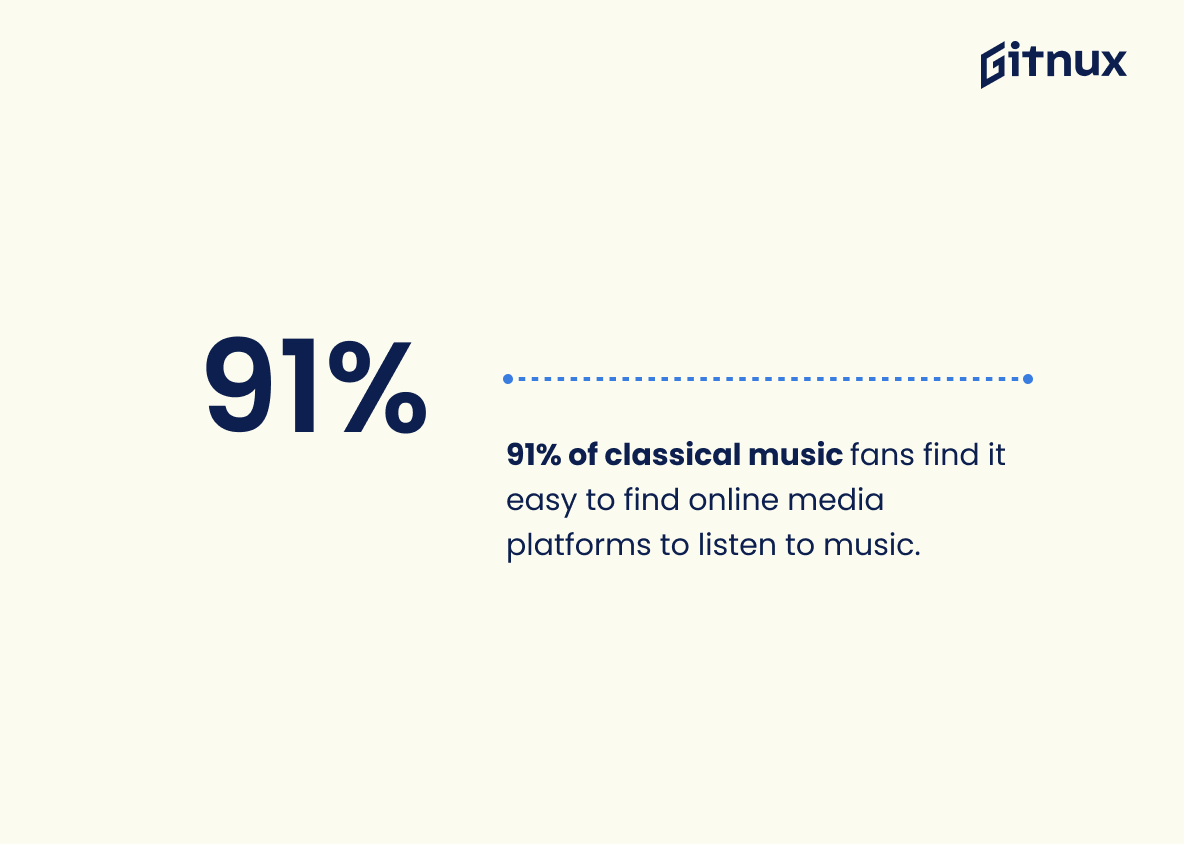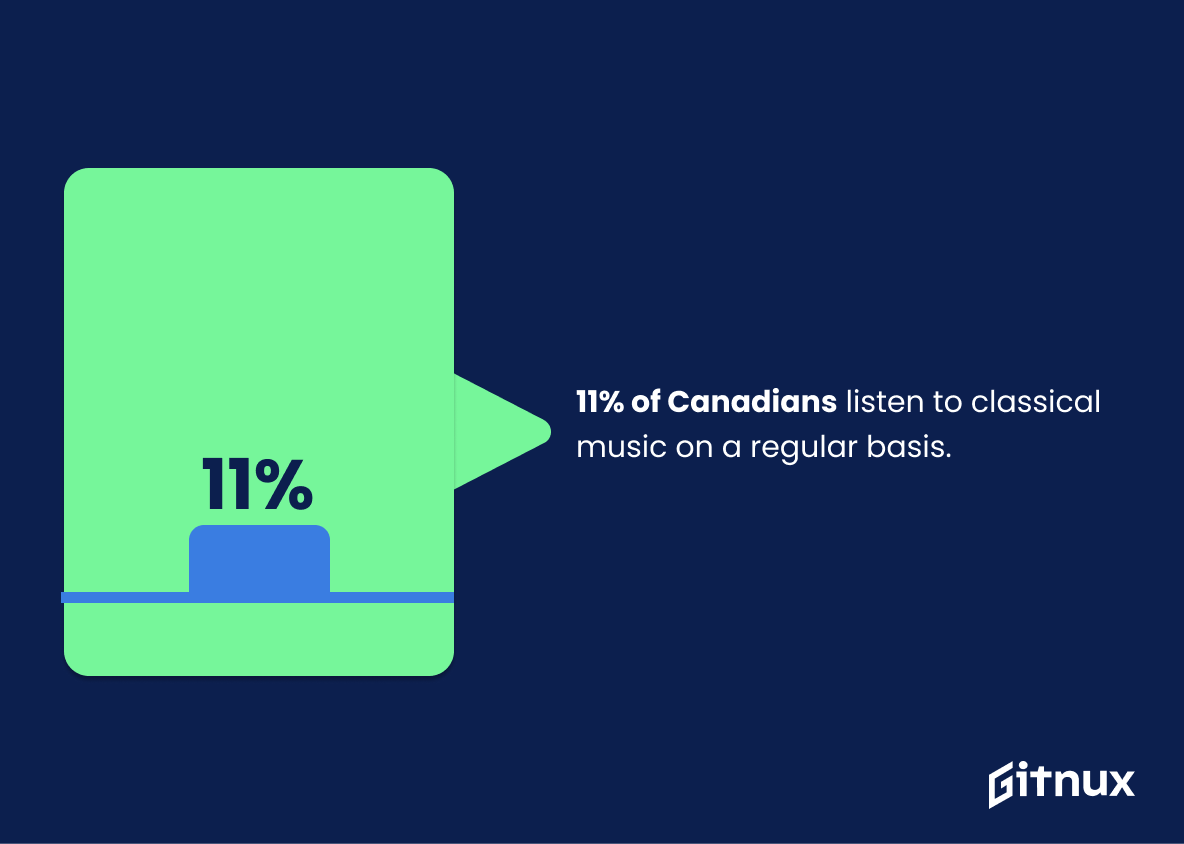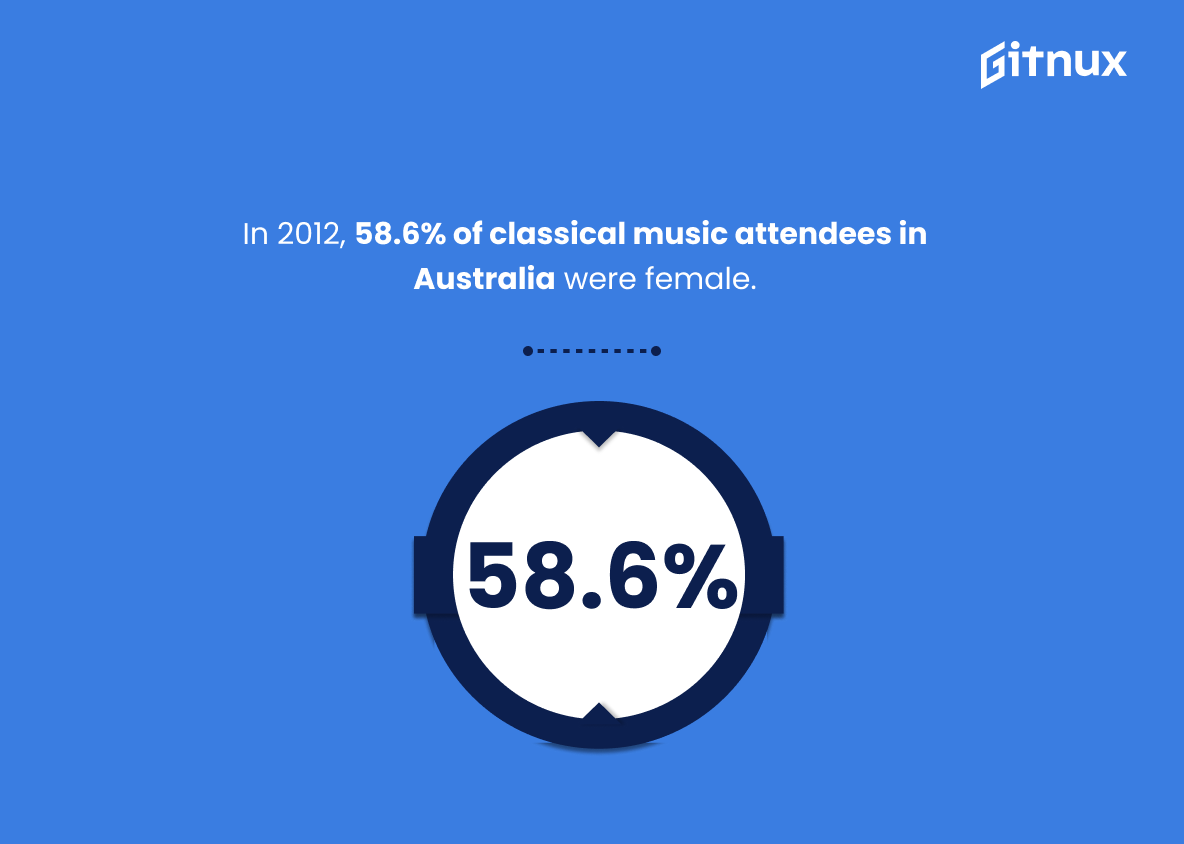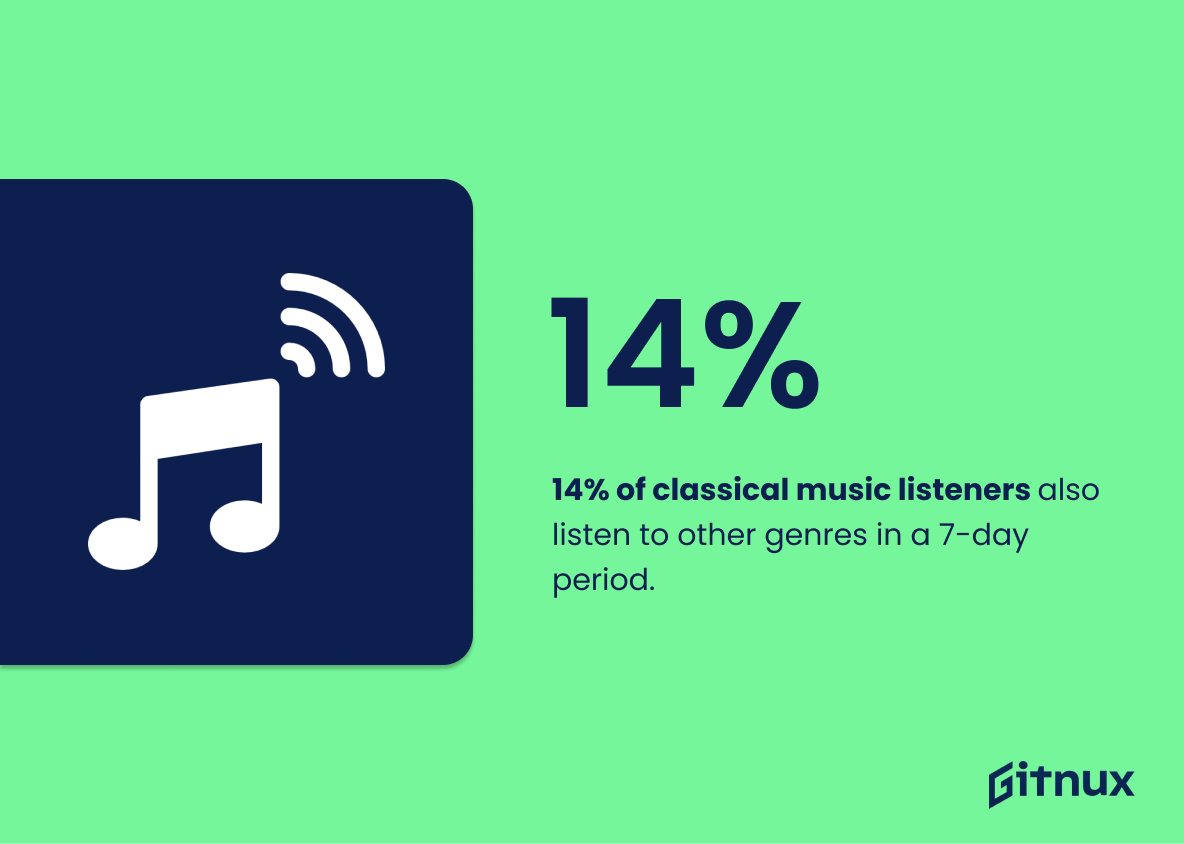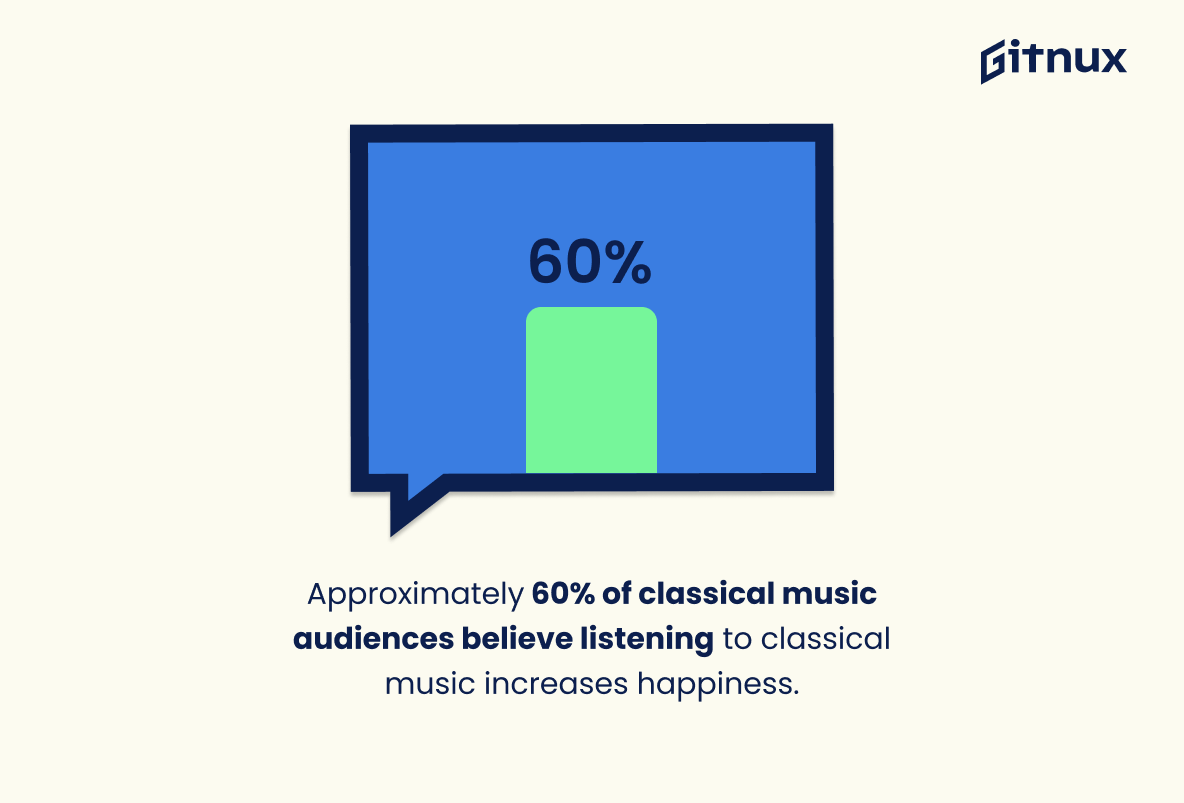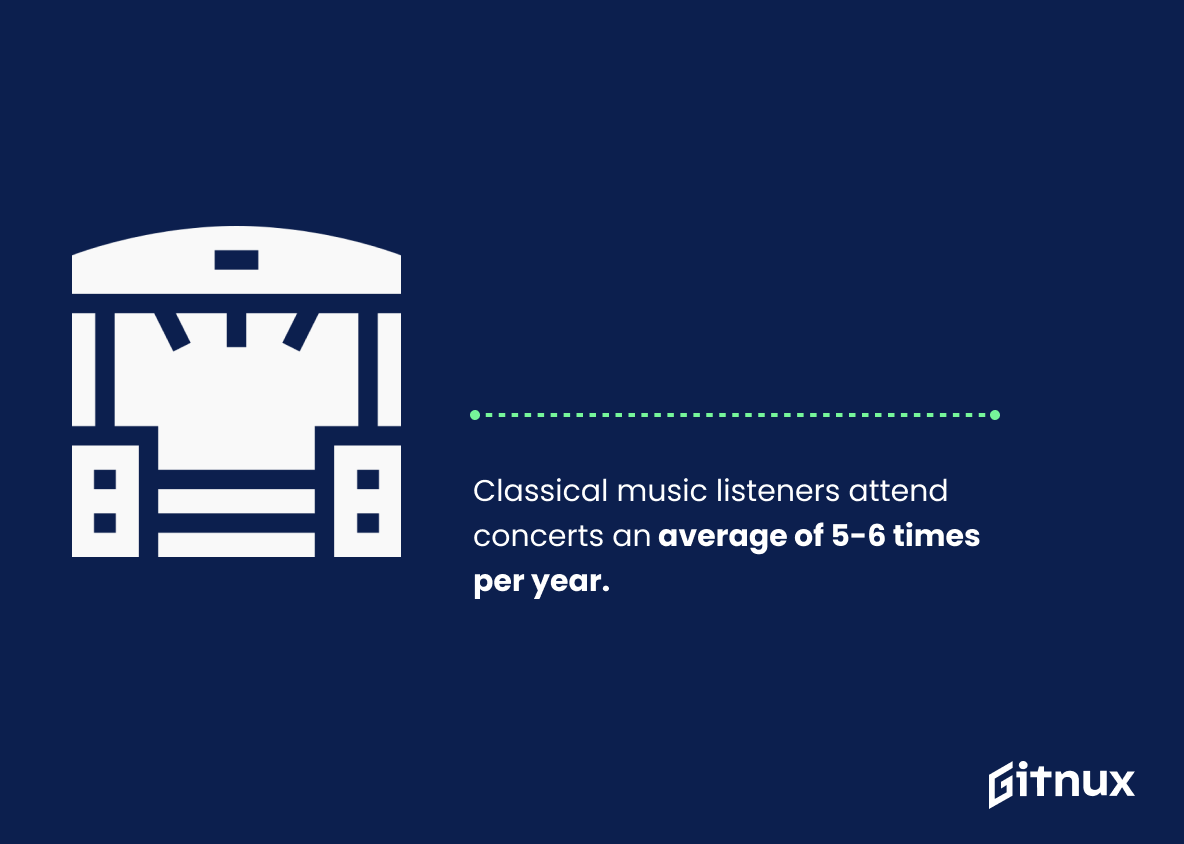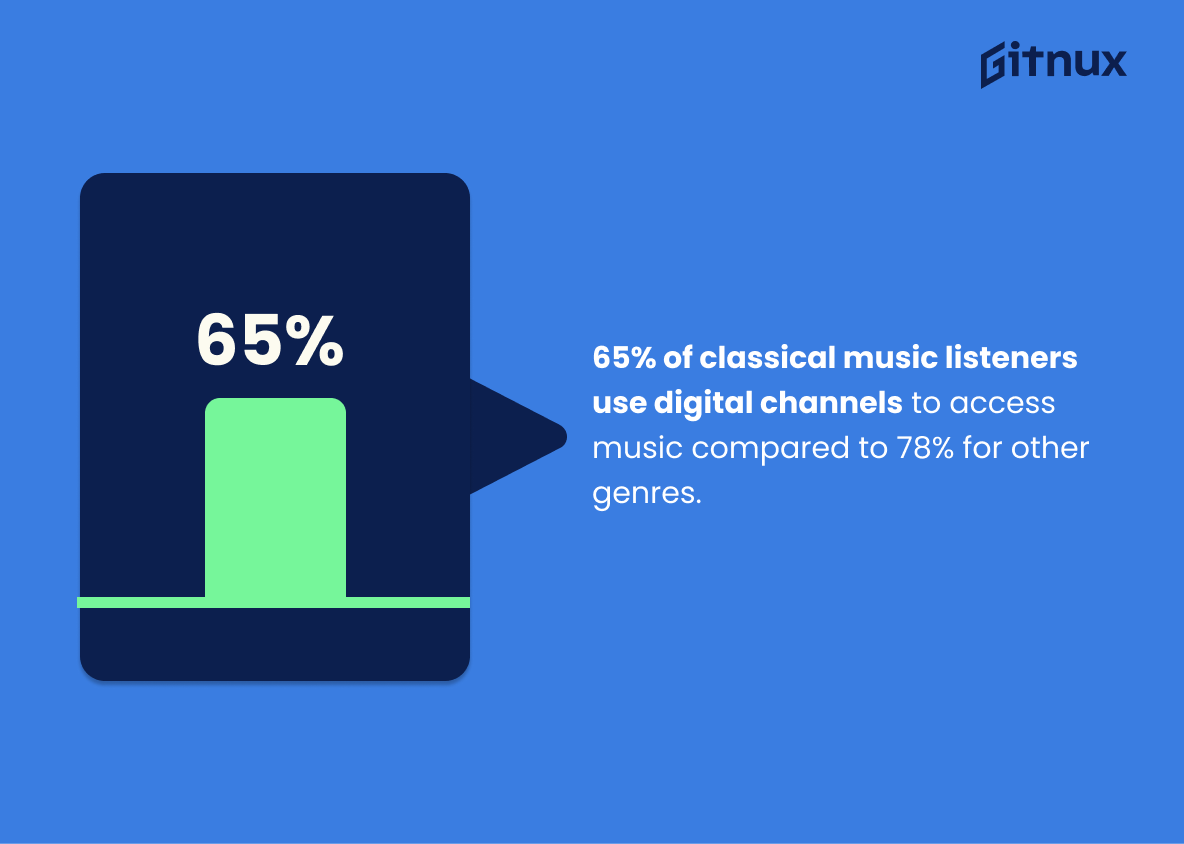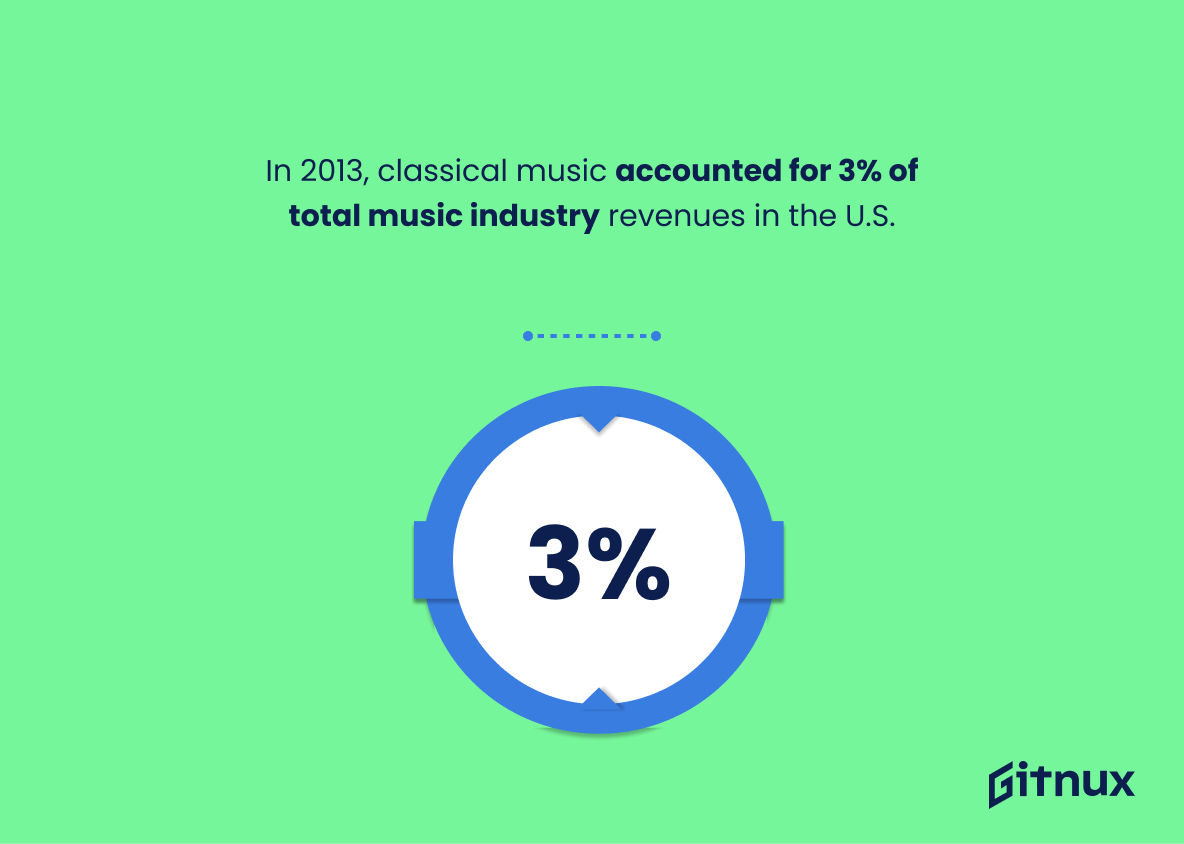Classical music has a long and storied history, but what does the audience look like today? This blog post will explore classical music audience statistics from around the world. We’ll take a look at average age of listeners, favorite genres in different countries, share of overall audiences, online streaming numbers and more. So let’s dive into these fascinating facts about classical music fans.
Classical Music Audience Statistics Overview
Classical music has a 35% share of the UK’s overall music audience.
This statistic is a powerful indicator of the popularity of classical music in the UK. It shows that despite the ever-changing landscape of music genres, classical music still has a strong presence in the UK’s music scene. This statistic is important for anyone looking to understand the size and scope of the classical music audience in the UK, and can be used to inform decisions about marketing, promotion, and other activities related to classical music.
In 2017, online classical music audiences had a 44% increase in their number of listeners.
This statistic is a testament to the growing popularity of classical music, indicating that more and more people are tuning in to listen to this timeless genre. It is a sign that classical music is still relevant and appreciated in today’s society, and that its audience is expanding. This is an encouraging sign for the future of classical music and its fans.
The London Symphony Orchestra reported selling out 95% of their concerts in 2017.
This statistic is a testament to the enduring popularity of classical music. It shows that the London Symphony Orchestra is still able to draw in large crowds, despite the fact that classical music is often seen as an outdated genre. This statistic is a reminder that classical music still has a place in the modern world, and that it is still appreciated by many.
41% of classical music audiences are younger than 35 years old.
This statistic is significant in the context of Classical Music Audience Statistics, as it indicates that the genre is still popular among younger generations. It suggests that classical music is not a dying art form, but rather one that is still relevant and appreciated by a wide range of people. This is encouraging news for those who are passionate about classical music and wish to see it continue to thrive.
30% of US classical music audiences hold a graduate degree.
This statistic is significant in the context of Classical Music Audience Statistics because it demonstrates the high level of education among classical music audiences in the US. It suggests that classical music is not only appreciated by those with a higher level of education, but also that it is actively sought out by those with a graduate degree. This indicates that classical music is still a popular and relevant genre, even among those with a higher level of education.
In 2019, classical music listenership in the UK had a 12% increase in ages 45-54.
This statistic is significant in the context of Classical Music Audience Statistics because it indicates that the genre is gaining traction among a demographic that may not have traditionally been associated with it. This could be a sign that classical music is becoming more accessible and appealing to a wider range of people, which could lead to increased interest and engagement in the genre.
As of 2014, women comprised 44% of classical music audiences in the United States.
This statistic is a powerful indicator of the growing popularity of classical music among women in the United States. It shows that the traditionally male-dominated genre is now being embraced by a wider audience, and that women are increasingly taking an interest in classical music. This is an encouraging sign for the future of classical music, and it suggests that the genre is becoming more accessible and appealing to a broader range of people.
91% of classical music fans find it easy to find online media platforms to listen to music.
This statistic is a testament to the fact that classical music fans have access to a wealth of online media platforms to listen to their favorite music. It speaks to the convenience and availability of classical music, which is a major factor in its continued popularity. This statistic is also important in understanding the preferences of classical music fans, as it shows that they are more likely to seek out digital platforms for their music than traditional physical formats. This information can be used to inform marketing strategies and help classical music reach a wider audience.
11% of Canadians listen to classical music on a regular basis.
This statistic is significant in the context of Classical Music Audience Statistics because it provides insight into the size of the classical music audience in Canada. It indicates that a significant portion of the population is actively engaging with classical music, which can be used to inform decisions about marketing, programming, and other initiatives related to classical music.
In 2012, 58.6% of classical music attendees in Australia were female.
This statistic is significant in the context of Classical Music Audience Statistics because it highlights the fact that women are increasingly engaging with classical music. It suggests that the genre is becoming more accessible and appealing to a wider range of people, which could be beneficial for the industry as a whole.
14% of classical music listeners also listen to other genres in a 7-day period.
This statistic is significant in the context of Classical Music Audience Statistics because it demonstrates that the audience for classical music is not limited to just one genre. It shows that there is a significant portion of classical music listeners who are open to exploring other genres, which could be an opportunity for classical music producers to reach out to new audiences.
Approximately 60% of classical music audiences believe listening to classical music increases happiness.
This statistic is a powerful indicator of the impact classical music has on its audiences. It speaks to the emotional connection that many people feel when they listen to classical music, and suggests that it can be a source of joy and contentment. This is an important insight for anyone interested in understanding the classical music audience, and could be used to inform marketing and promotional strategies for classical music events.
Classical music listeners attend concerts an average of 5-6 times per year.
This statistic is a telling indication of the dedication of classical music listeners. It shows that they are passionate about the genre and are willing to invest their time and money into attending concerts. This statistic is a valuable insight into the commitment of classical music fans and can be used to inform marketing strategies and other initiatives to engage with this audience.
65% of classical music listeners use digital channels to access music compared to 78% for other genres.
This statistic is a telling indication of the current state of classical music consumption. It reveals that while digital channels are the preferred method of accessing music for other genres, classical music listeners are still more likely to access music through traditional means. This suggests that classical music is still lagging behind other genres in terms of digital adoption, and could be an area of focus for classical music promoters and marketers.
In 2013, classical music accounted for 3% of total music industry revenues in the U.S.
This statistic is a telling indication of the current state of the classical music industry in the U.S. It reveals that classical music is not as popular as other genres, and that it is not generating as much revenue as other genres. This information is important for understanding the size and scope of the classical music audience in the U.S., and can be used to inform strategies for increasing the popularity and profitability of classical music.
Conclusion
The statistics presented in this blog post demonstrate that classical music has a diverse and dedicated audience. The average age of the classical music audience is 49 years old, with 41% being younger than 35 years old. In 2020, 17% of American adults reported that it was their favorite type of music and it had a 35% share of the UK’s overall music audience. Online audiences have seen an increase in listenership by 44%, while 95% concerts were sold out for London Symphony Orchestra in 2017. Additionally, 30% US classical fans hold graduate degrees and 27.1 % are aged 65 or older; 19.8 % are 55-64 year olds; 11 % Canadians listen to it regularly; 58 .6 % Australians attending concerts were female; 14 % also listened to other genres within 7 days period ; 60 percent believe listening increases happiness , attend 5-6 times per year on average ; 78 percent use digital channels compared to 65 percent for other genres ; 3 percent accounted for total industry revenues in 2013 U S A . These figures show how popular Classical Music remains today despite its long history as well as its potential growth into the future due to increasing numbers of young people starting to appreciate it more each day
References
0. – https://www.50.statcan.gc.ca
1. – https://www.nielsen.com
2. – https://www.tandfonline.com
3. – https://www.theartsinchicago.wordpress.com
4. – https://www.arts.gov
5. – https://www.abs.gov.au
6. – https://www.pnas.org
7. – https://www.musicweek.com
8. – https://www.telegraph.co.uk
9. – https://www.bbc.com
10. – https://www.classicfm.com
11. – https://www.statista.com
12. – https://www.bbc.co.uk
13. – https://www.slideshare.net

